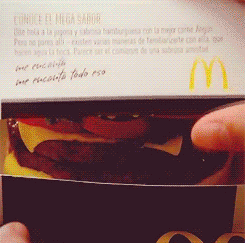Tech has revolutionised many industries, but when it comes to the food industry, it’s really savoured success. Nowadays, you can get just about any meal, anywhere, at virtually any time.
This, however, wasn’t always the case. For more than a thousand years, there wasn’t so much as take-outs, let alone all the other advancements tech has brought to the table for the food industry (pun deliciously intended). It wasn’t until King Umberto of Naples, Italy demanded to have a pizza pie delivered that the food industry enjoyed its first big idea.
The following year, a Bombay businessman started a lunch delivery service through which he provided lunch to blue-collar workers all over the city. Since then, the food industry developed a hunger for ingenuity. Let’s dig into just how tech has evolved the food industry.
Cooking up a revolution
The day smartphones were able to connect to the internet is the day the food industry truly experienced a digital awakening. At the time, restaurants were still taking care of their own deliveries, but customers would order via an app such as GrubHub or Just Eat.
What came next was more logistical support for restaurants, with apps not only providing the platform but also an intuitive, integrated delivery system. Examples of this type of business include Uber Eats, Spoon Rocket, and Rappido. In this model, restaurants don’t have to develop their own apps or even grow their own delivery sides; the app does it for them. As of 2020, Uber Eats was supporting around 600,000 restaurants. Internationally, the app has 66 million users. Now that’s a mouthful.

Have your code and eat it
The global online food delivery services market is expected to grow from $115.07 billion in 2020 to $126.91 billion in 2021 at a compound annual growth rate of 10.3%. In South Africa alone, there were at least 6,400 active food delivery drivers in 2020.
It’s amazing to think that code is the reason someone is waiting at your door with a steaming hot pizza. Not only that, but the fact that code is used to build apps that can predict what we want and offer all kinds of suggestions.

Powerful algorithms are able to discount prices during off-peak hours in order to increase sales. Lower prices allow lower-income customers to order delivery, when they may have previously been priced out of the market. There are so many other algorithms fine-tuning the value offering coming from the food industry for consumers world over.
How code is redefining the future of food
We are now close to approaching the next stage of development, which is the introduction of ghost restaurants. This idea proposes restaurants that only have kitchens. In other words, they are focused on delivery, rather than on offering up a dining experience. You may be questioning the efficiency of this model, as it’s general knowledge that, in most cases, restaurants earn more when customers consume on the premises. They order drinks and desserts, pay for the service, which sometimes doesn’t happen when you order online. But, focusing your cost on an efficient delivery system can help save real estate costs, staff, insurance, among other factors. Also, the restaurants have more time and resources to bring in new strategies to make their system more efficient.
Food delivery apps are the tip of the iceberg because the food industry is also getting accustomed to grocery delivery apps, restaurant booking apps, meal planner apps, and food by drone delivery. Ultimately, our core needs are being met in more and more dynamic ways, thanks to code. At the end of very long lines of code awaits a fresh meal to be enjoyed. The food industry has also been galvanised by these innovations in the wake of the pandemic, with more efficient ways for food to reach consumers.
Who knows – we may be teleporting food around the globe in the next 10 – 20 years. The possibilities are endless. The power of code is evident and this is your opportunity to possibly be the cause of the next world-changing piece of technology. We at HyperionDev relish in the opportunity to connect you to a world of coding possibilities with coding courses that’ll tantalise your tech tastebuds. Check them out here.


